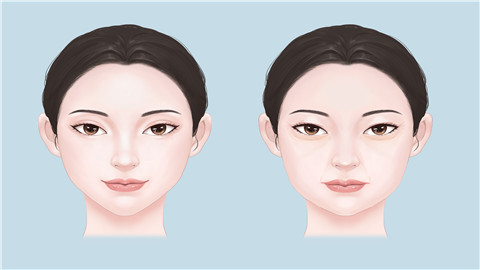How many types of hyaluronic acid are there?
Hyaluronic acid is widely used as a dermal filler to improve facial fine lines, wrinkles, and to add volume to the lips or face. The general reference price for hyaluronic acid injections ranges from 500 to 2000 yuan per session, with visible improvement typically noticeable within one to three months. Types of hyaluronic acid generally include cross-linked hyaluronic acid, non-cross-linked hyaluronic acid, monophasic hyaluronic acid, biphasic hyaluronic acid, and long-lasting hyaluronic acid. If any discomfort occurs, prompt medical attention is recommended.

1. Cross-linked hyaluronic acid: This type is produced through cross-linking technology that bonds hyaluronic acid molecules together, providing higher stability and longevity. Its firmer texture makes it suitable for deep tissue filling, such as nose augmentation and chin enhancement, offering good structural support that can last from several months to several years.
2. Non-cross-linked hyaluronic acid: Not subjected to cross-linking, this type has smaller molecules and a softer texture. It is primarily used for skin hydration and mesotherapy injections, quickly replenishing skin moisture and making the skin appear hydrated and smooth, although the effects are relatively short-lived, typically lasting 1 to 3 months.
3. Monophasic hyaluronic acid: A homogeneous hyaluronic acid gel with a fine texture, it provides natural-looking results after injection. It is suitable for precise area filling, such as tear troughs and lips, seamlessly integrating with surrounding tissues to reduce the formation of nodules and lumps.
4. Biphasic hyaluronic acid: Composed of a mixture of hyaluronic acid particles and gel, it offers higher firmness and support. It is commonly used for facial contouring, such as lifting the malar area and filling the cheeks, effectively improving facial depressions with noticeable and long-lasting results.
5. Long-lasting hyaluronic acid: Processed through special techniques, this type metabolizes more slowly in the body, maintaining its effects for several years. It is generally used in areas requiring significant filling and long-term results, such as nasolabial folds and the temples, though it is relatively more expensive.
The effects of hyaluronic acid fillers are usually immediate, with visible improvements apparent right after injection. The full results may take several days to a week to become evident, as mild swelling at the injection site is common. Proper post-treatment skin care is therefore important.






